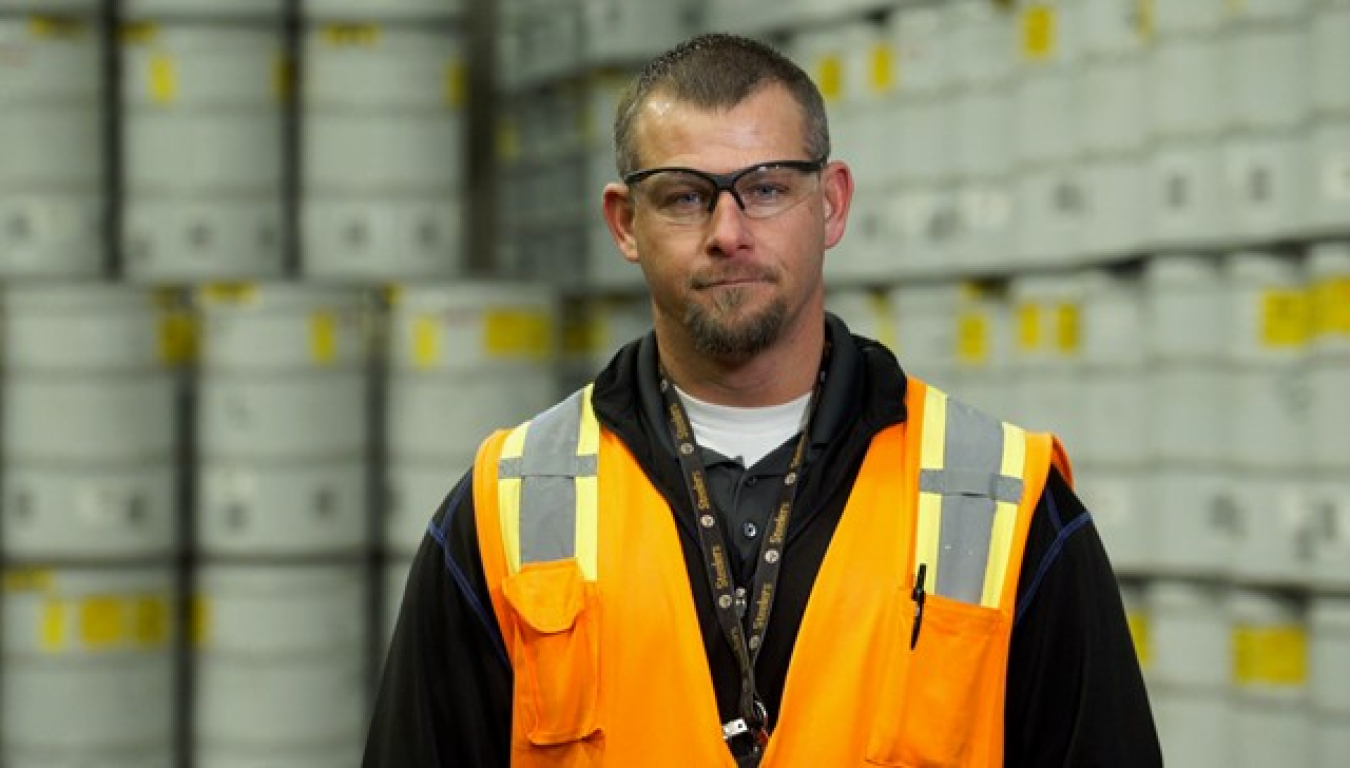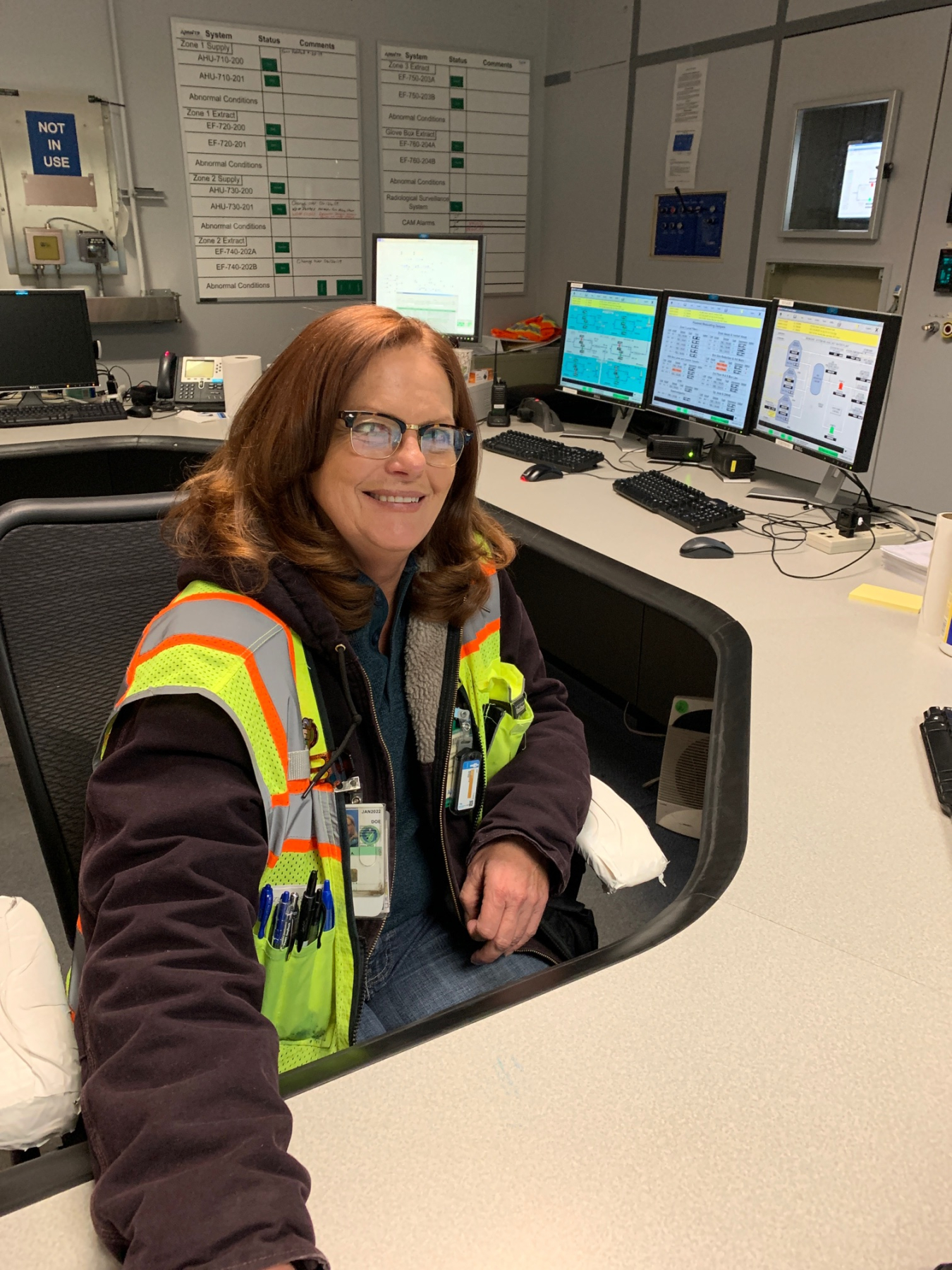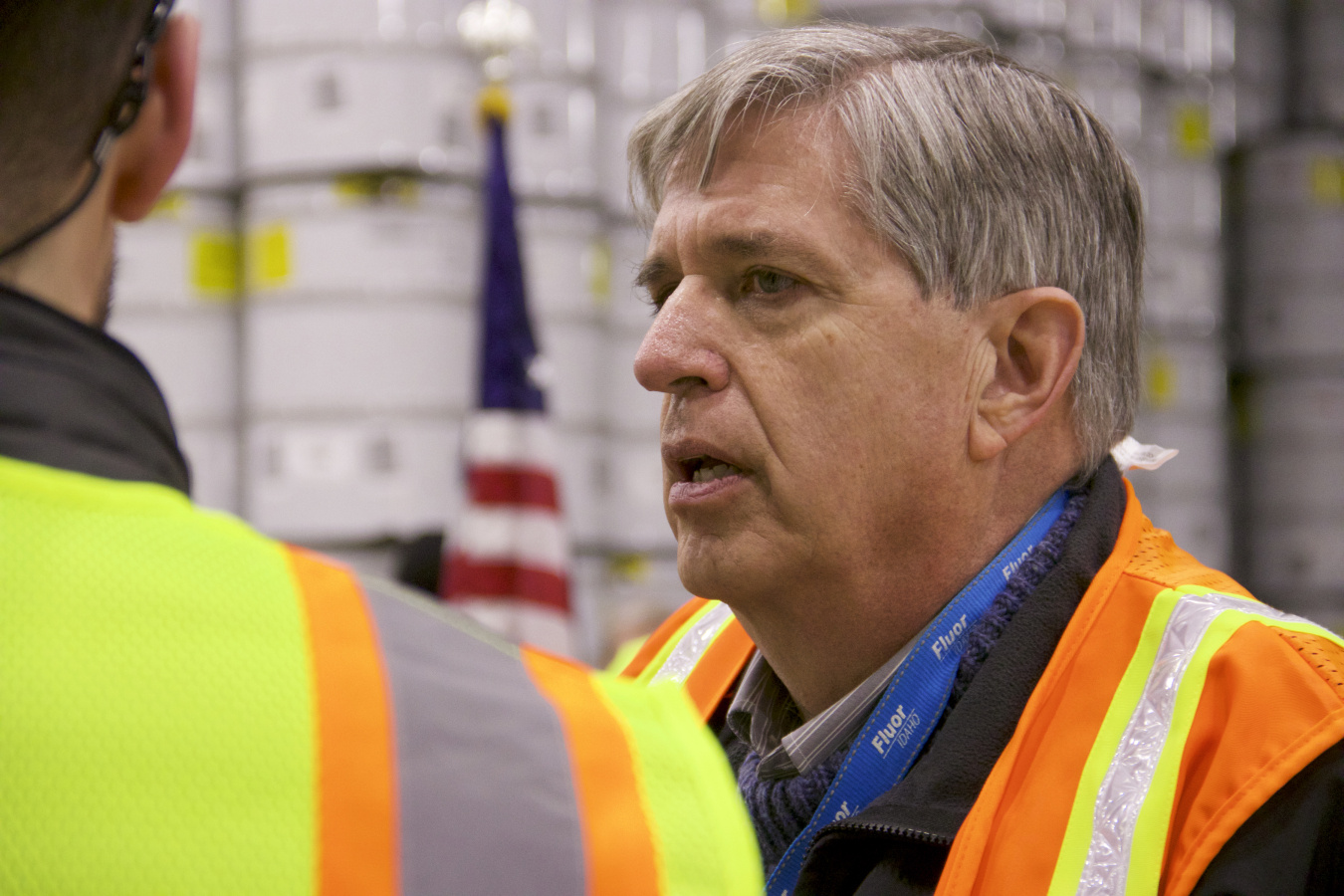Employees Reminisce as Treatment Mission Nears End
Office of Environmental Management
October 15, 2019IDAHO FALLS, Idaho – For employees of the Advanced Mixed Waste Treatment Project (AMWTP) at DOE's Idaho National Laboratory Site, the anticipated completion of the facility’s transuranic (TRU) waste debris treatment mission this fall is bittersweet.
Many expressed a great feeling of satisfaction in supporting a large part of the facility’s work scope. But saying goodbye to colleagues and to the buildings where they worked is a sobering reality.
Nathan Loftus, waste treatment operations manager for Fluor Idaho, EM’s INL Site cleanup contractor, joined AMWTP in 2004 as a utility operator after leaving a supervisory job with a Utah commercial and residential construction firm.
“I wanted to move back home, and the AWMTP position provided better job security,” he said.
When Loftus arrived, AMWTP hadn’t begun operating yet. It was undergoing an operational readiness review before commencing waste treatment. Loftus’ job was to oversee all utility work in the facility, from ventilation to safety systems.
Loftus took additional training and increased his qualifications, eventually working his way up to manager.
“I went from the bottom on up,” he said.
What Loftus will miss most is the people who made the facility so successful.
“I’ve worked with a lot of good people,” he said. “I’ve learned something from each and every one of them.”
Loftus anticipates staying at AMWTP to assist in the facility’s closure under the federal Resource Conservation and Recovery Act, an effort set to continue until 2028. He said shipping waste will likely continue until 2028, and then key AMWTP buildings would be torn down.


Marietta Ryan came to AMWTP in 2004 from Wyoming, where she was a water treatment plant operator. She heard of the job opening at a local job service office.
In her nearly 16 years at AMWTP, Ryan advanced from a supercompactor operator to a member of a maintenance crew in which she performed “bubble suit” — or personal protective equipment — entries into the facility’s boxlines for waste size-reduction and packaging, among other work. The boxlines are huge concrete and metal hot cells where containers of waste are opened and sorted without exposing workers to hazardous materials inside.
Ryan spoke highly of her coworkers.
“The guys in the boxline are incredible equipment operators,” she said. “They keep the supercompactor running smoothly. It’s like we have a racecar and all the parts have to work.”
Ryan plans to retire at the end of AMWTP’s waste treatment mission, buy a motorhome, and travel the U.S., including visiting lifelong friends she made at AMWTP who have since moved to other states.
“I’m going to miss the people,” she said, referring to colleagues at the Treatment Facility. “We’re like family.”

Fluor Idaho President Fred Hughes was general manager of BNFL Inc. when that company began construction of AMWTP in the late 1990s. He was even present for the facility’s ceremonial groundbreaking.
Following other nuclear industry assignments, Hughes returned to Idaho in 2016 to lead the Idaho Cleanup Project contract for Fluor Idaho.
“In many respects, I feel fortunate to have been here before construction actually began, and now that the facility is on the cusp of completing its waste treatment mission,” he said. “I’ve come full circle here so there’s a feeling of pride and accomplishment.”
Hughes said the employees themselves deserve much credit and praise for their work.
“I can’t thank our employees enough for the countless hours, days, weeks, and years of support,” he said. “It’s been such an incredible honor to work with so many talented people. They are truly some of the best in the DOE complex.”

